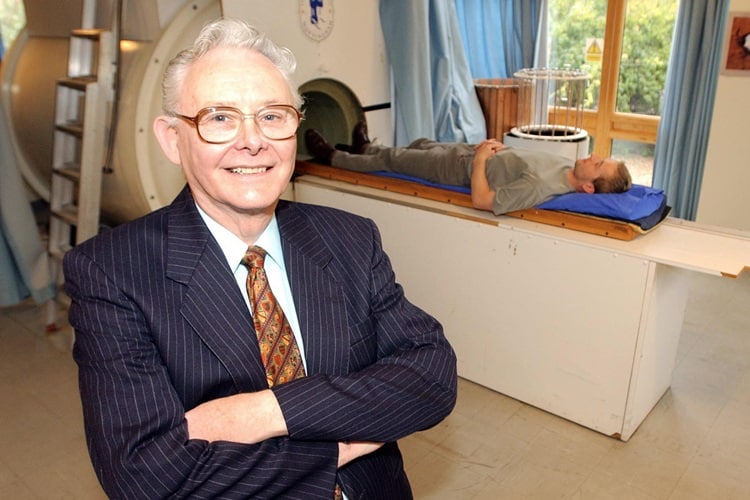Unmasking a Legend: The Story of Peter Mansfield

Peter Mansfield (9 October 1933 – 8 February 2017) was a British physicist who made significant contributions to the field of magnetic resonance imaging (MRI).
Life and Career
Peter Mansfield was born on October 9, 1933, in London, England. He grew up with a keen interest in science and technology, which later influenced his choice of career in physics.
Mansfield pursued his education at Queen Mary College, University of London, where he earned his bachelor’s degree in physics in 1956. He continued his studies, obtaining a Ph.D. in physics from the same institution in 1962.
Mansfield’s groundbreaking work was in the field of magnetic resonance imaging. In the 1970s, he developed a method called echo-planar imaging (EPI), which significantly accelerated the imaging process. EPI allowed for the rapid acquisition of images and became a crucial component of modern MRI technology.
His contributions to MRI technology revolutionized medical diagnostics, providing detailed and non-invasive images of the human body’s internal structures. Mansfield’s work laid the foundation for advancements in medical imaging, leading to improved diagnosis and treatment.
In recognition of his achievements, Peter Mansfield was jointly awarded the Nobel Prize in Physiology or Medicine in 2003, alongside Paul Lauterbur, another pioneer in MRI technology. The Nobel Committee highlighted their “seminal discoveries” in the field of MRI.
Apart from his work in MRI, Mansfield held various academic positions, including professorships at the University of Nottingham. He continued to contribute to the scientific community throughout his career.
He passed away on February 8, 2017, at the age of 83, in Nottingham, England.
Award and Legacy
Peter Mansfield received numerous awards and honors throughout his career, with the most prestigious being the Nobel Prize in Physiology or Medicine in 2003. He shared this honor with Paul Lauterbur for their contributions to the development of magnetic resonance imaging (MRI). The Nobel Committee specifically acknowledged Mansfield’s work on echo-planar imaging (EPI), a technique that revolutionized the speed and efficiency of MRI scans.
In addition to the Nobel Prize, Mansfield received other accolades, including the Royal Medal from the Royal Society in 1979 and the Gold Medal from the Society of Magnetic Resonance in Medicine in 1993. These awards recognized his outstanding contributions to the field of physics and medical imaging.
Mansfield’s innovative techniques significantly improved the speed and quality of MRI scans, making them more practical and accessible for medical diagnosis. His work laid the foundation for advancements in medical imaging technology.
The impact of Mansfield’s contributions is evident in the widespread use of MRI technology in hospitals and clinics worldwide. MRI has become an indispensable tool in medical diagnostics, allowing for detailed and non-invasive imaging of internal structures.
Mansfield’s work played a crucial role in establishing MRI as a standard and invaluable medical imaging technique. It has become essential for diagnosing a wide range of medical conditions, from neurological disorders to musculoskeletal issues.
Mansfield’s legacy extends to his role as an educator and mentor. He contributed to the scientific community through his research and by training the next generation of scientists and physicists.
Observer Voice is the one stop site for National, International news, Sports, Editor’s Choice, Art/culture contents, Quotes and much more. We also cover historical contents. Historical contents includes World History, Indian History, and what happened today. The website also covers Entertainment across the India and World.

